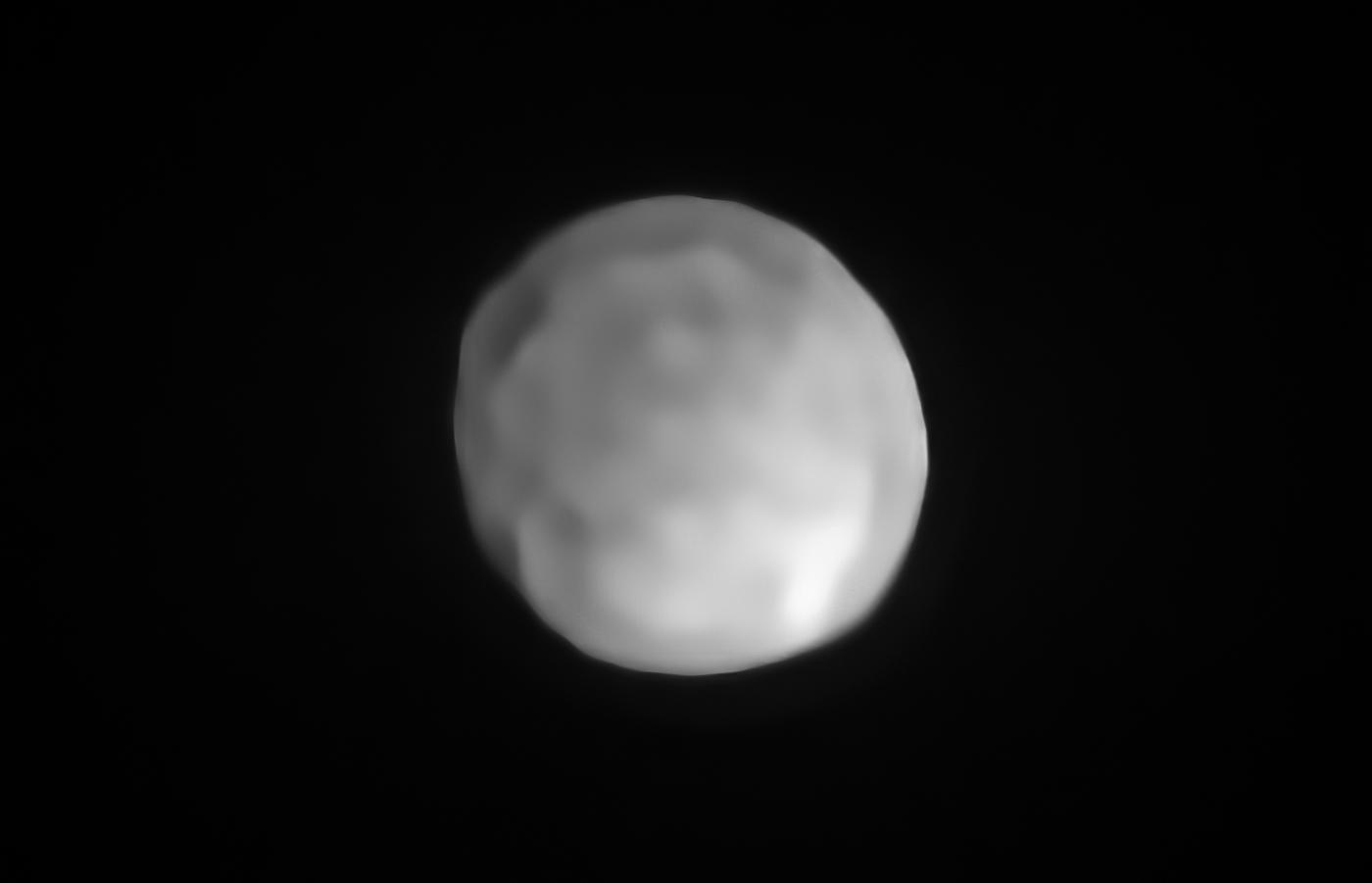
Two billion years ago, one world was destroyed, but a new one was born. Hygiea, the 4th largest asteroid in the main-belt, is the result of this catastrophic disruption of an asteroid.
A team of researchers, including SETI Institute astronomer Franck Marchis, have successfully imaged Hygeia for the first time. Using an innovative adaptive optics at the ESO VLT (European Southern Observatory Very Large Telescope), located in the Atacama Desert in Chile, the image revealed that this distant main-belt asteroid is a round world. Its spherical shape is probably the product of the way the asteroid formed.
This finding confirms that asteroids are mini-geological worlds: some have moons, some have a complicated past life with scars and complex features.
Because this work shows that Hygiea conforms well to the definition of a Dwarf Planet, the team will request official recognition that the asteroid is a dwarf planet. The team will make this request through a proposal to the International Astronomical Union (IAU).
A new class of ground-based telescopes are currently being constructed, including the Extremely Large Telescope (ELT) which will scope its first light in 2024, and the Giant Magellan Telescope (GMT) which should scope first light in 2023. With the arrival of these 30-40m class telescopes, this kind of study will be possible for more asteroids, even to the most distant ones beyond the orbit of Neptune.





